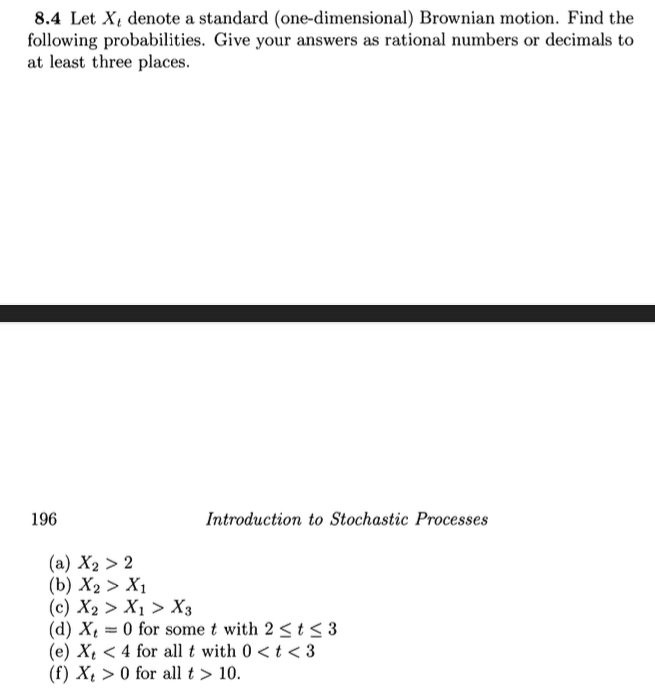Home /
Expert Answers /
Statistics and Probability /
please-answer-parts-a-f-let-x-denote-a-standard-one-dimensional-brownian-motion-find-the-fo-pa686
(Solved): Please answer parts (a)-(f). Let X, denote a standard (one-dimensional) Brownian motion. Find the fo ...
Please answer parts (a)-(f). Let X, denote a standard (one-dimensional) Brownian motion. Find the following probabilities. Give your answers as rational numbers or decimals to at least three places.
( a ) X2 > 2
(b) X2 > XI
(c) X2 > XI > X3
(d) Xt = 0 for some t with 2 < t ? 3
(e) X+ < 4 for all t with 0 < t < 3
(f) Xt > 0 for all t > 10.
8.4 Let denote a standard (one-dimensional) Brownian motion. Find the following probabilities. Give your answers as rational numbers or decimals to at least three places. 196 Introduction to Stochastic Processes (a) (b) (c) (d) for some with (e) for all with (f) for all .
Expert Answer
Let X, denote a standard (one-dimensional) Brownian motion. Find the following probabilities. Give your answers as rational numbers or decimals to at
